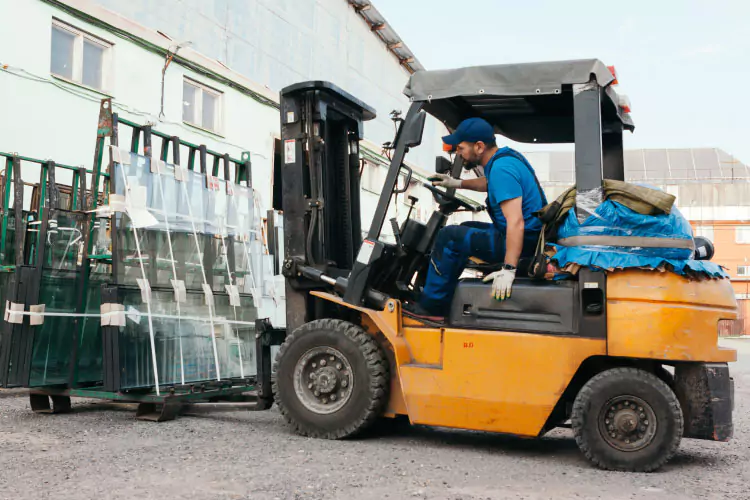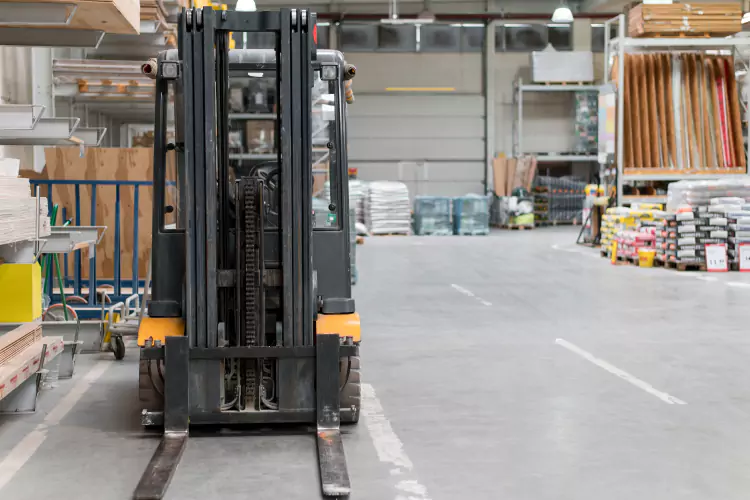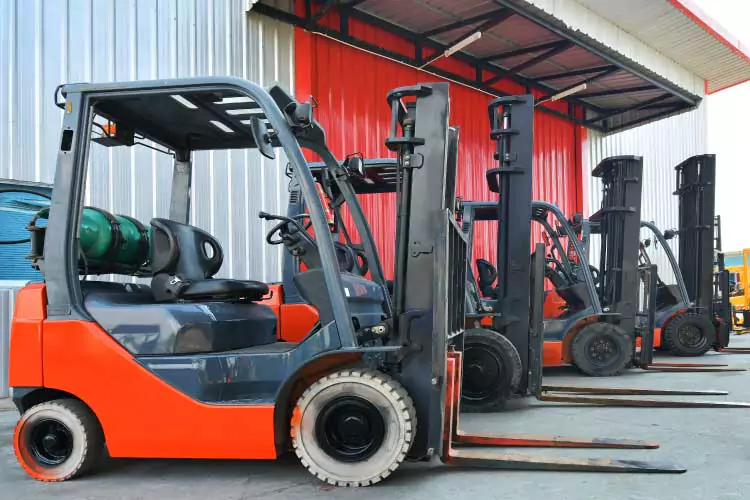Forklifts are indispensable tools in the landscape of material handling, playing a pivotal role in the efficient operation of warehouses and various industries. At the heart of these robust machines lies an integral component known as the forklift carriage. This crucial element facilitates the attachment of forks and other equipment, enabling the lift to securely move, lift, and manipulate loads. Understanding the functions, types, and classes of forklift carriages is key to maximizing productivity and ensuring safety in material handling environments. Whether dealing with heavy loads, navigating tight spaces, or requiring precision in placement, the carriage’s design and compatibility with other forklift parts determine its performance and by extension, the overall efficacy of the forklift itself.
Understanding a Forklift Carriage
A forklift carriage constitutes a critical component of forklift machinery, acting as a bridge between the forklift itself and the attachments used for various purposes, such as lifting and moving materials. Essentially, it is the part to which the forks or any other attachments are secured and maneuvered. Understanding its role is crucial for anyone involved in material handling operations because it significantly impacts the efficiency and safety of these activities. The carriage’s design and capabilities determine the types of loads that can be handled, how they are manipulated, and under what conditions the operations can safely proceed.
Components of a Forklift Carriage
The forklift carriage consists of several key components that work together to facilitate the movement and management of materials. These include:
- Forklift Mast: This is the vertical part of the forklift that lifts and lowers the load. The carriage moves along this mast during operations.
- Forks: These are the horizontal arms that directly contact and support the load. Their position can be adjusted on the carriage to accommodate different sizes of loads.
- Load Backrest: A structure that prevents the load from shifting backward towards the operator’s cabin. It is especially necessary when lifting materials high off the ground.
- Lifting Mechanism: Comprising chains and rollers, this mechanism enables the carriage to move up and down the mast.
- Attachment Bar or Mounting Points: These are specific points on the carriage where various attachments, aside from forks, can be secured for specialized material handling tasks.
Importance of Forklift Carriage
Enhancing Efficiency in Material Handling
The forklift carriage is pivotal in enhancing the efficiency of material handling operations. By facilitating the quick attachment and detachment of different forks and tools, it allows for a wide range of materials to be handled, from pallets and crates to more specialized items. The ability to adjust the fork’s width and use various attachments means a single forklift can perform multiple tasks, reducing the need for multiple types of machinery and thus saving on both space and cost. Furthermore, the precision with which a carriage operates ensures minimal product damage, leading to less waste and higher operational efficiency.
Ensuring Safety in Operations
Safety in material handling is paramount, and the forklift carriage plays a significant role in maintaining a safe working environment. A properly functioning carriage with the correct attachment for the load ensures that materials are securely held, minimizing the risk of accidents due to falling objects. The load backrest further prevents shifting of the load towards the operator, reducing the risk of injuries. Regular maintenance and inspection of the carriage and its components are necessary to ensure that they remain in good working condition, thus upholding the highest safety standards.
Types of Forklift Carriages

The type of forklift carriage required for a particular operation depends on various factors, including the weight and dimensions of the load, the height to which it needs to be lifted, and the specific requirements of the operation. Carriages are categorized into classes based on these factors, with each class designed to match certain specifications:
Class 1 Forklift Carriages:
Typically used for electric motor rider trucks, these carriages are designed for lighter loads and are commonly found in warehouse operations. Carriage height – 13” , Carriage capacity (lb) – <2,200.
Class 2 Forklift Carriages:
Ideal for electric narrow aisle trucks, Class 2 carriages are built for operations in tight spaces where maneuverability is key. Carriage height – 16” , Carriage capacity (lb) – 2,200–5,500.
Class 3 Forklift Carriages:
Known for manual and electric hand trucks, these carriages are designed for loads that can be pushed or pulled without the need for lifting. Carriage height – 20” , Carriage capacity (lb) – 5,500–10,998.
Class 4 Forklift Carriages:
Suitable for internal combustion engine trucks with cushion tires, Class 4 carriages are used in applications where the surface is smooth and flat, like indoor warehouses. Carriage height – 25” , Carriage capacity (lb) – 11,000–17,600.
Class 5 Forklift Carriages:
Designed for internal combustion engine trucks with pneumatic tires, Class 5 carriages are built for heavier loads and outdoor use on rough terrains. Carriage height – 28.66″ , Carriage capacity (lb) – 17,602–24,198.
How to Identify Forklift Carriage Class
Understanding the classification of forklift carriages is critical for selecting the appropriate equipment for various material handling tasks. Forklift carriage classes are primarily distinguished by the type of forklift they are designed for, which, in turn, is influenced by the forklift’s power source, tire type, and operating environment.
Class 1 – Electric Motor Rider Trucks
Class 1 carriage is designed for electric motor rider trucks. These forklifts are powered by electric batteries and are commonly used in indoor settings where air quality needs to be maintained. They are versatile, capable of handling a wide range of material handling tasks, and excel in environments such as warehousing and distribution centers. When identifying a Class 1 carriage, look for a design that supports the operational needs of electric motor rider trucks, including ease of attachment and detachment, compatibility with pallet and non-palletized loads, and suitability for both seated and stand-up configurations.
Class 2 – Electric Motor Narrow Aisle Trucks
The Class 2 carriage is made for electric motor narrow aisle trucks. These forklifts are specifically engineered to operate in confined spaces, making them ideal for maximizing storage space in warehouses. They often feature articulating steering and other design modifications that allow for tight maneuvering. A Class 2 carriage is characterized by its compact design that complements the slender frame of narrow aisle trucks, facilitating efficient operation within narrow corridors and improving storage density.
Class 3 – Electric Motor Hand Trucks or Hand/Rider Trucks
Class 3 carriages are used with electric motor hand trucks or hand/rider trucks. These forklifts are manually operated and are suitable for short distance travel and light to medium loads. They are often used for loading and unloading goods in truck bays or for stacking material in retail environments. The distinguishing feature of a Class 3 carriage is its simplicity and functionality for walk-behind or ride-on operations, allowing for quick and easy handling of goods in confined areas.
Class 4 – Internal Combustion Engine Trucks (Solid/Cushion Tires)
Designed for internal combustion engine trucks fitted with solid or cushion tires, Class 4 carriages are built to endure the rigors of indoor usage on smooth surfaces. These forklifts are preferred for their power and durability, making them suitable for a broad range of material handling tasks, including loading and unloading heavy goods, stacking, and horizontal transportation. A Class 4 carriage is distinguishable by its robust construction to support the operational demands of internal combustion engine trucks in indoor applications.
Class 5 – Internal Combustion Engine Trucks (Pneumatic Tires)
Class 5 carriage is associated with internal combustion engine trucks that have pneumatic tires. This class is versatile, catering to both indoor and outdoor operations across various industries. The pneumatic tires offer better traction and flotation on uneven and rough surfaces, such as in construction sites or yards. Identifying a Class 5 carriage involves looking for features that support the versatility of these forklifts, including enhanced load-bearing capacities, adaptability to rough terrains, and compatibility with various attachment types for specialized material handling.
Understanding the crucial role of the forklift carriage in construction operations underscores the importance of selecting high-quality, reliable equipment for your projects. This component is not only vital for the safety of operations but also impacts the efficiency and productivity of your worksite. For construction companies, ensuring that your fleet, whether owned or obtained through forklift rental, includes machinery with well-maintained and properly functioning carriages cannot be overstated. Opting for reputable forklift rental services provides access to a range of equipment that can meet specific site requirements, along with the assurance that the carriages are in optimal condition for safe and effective use. The right tools and equipment are pivotal to maintaining schedules, ensuring worker safety, and achieving the high standards set for every project. Therefore, when considering your next equipment rental or purchase, give due attention to the forklift carriage. It is a decision that affects more than just the bottom line; it impacts the very fabric of safe and productive construction environments.


